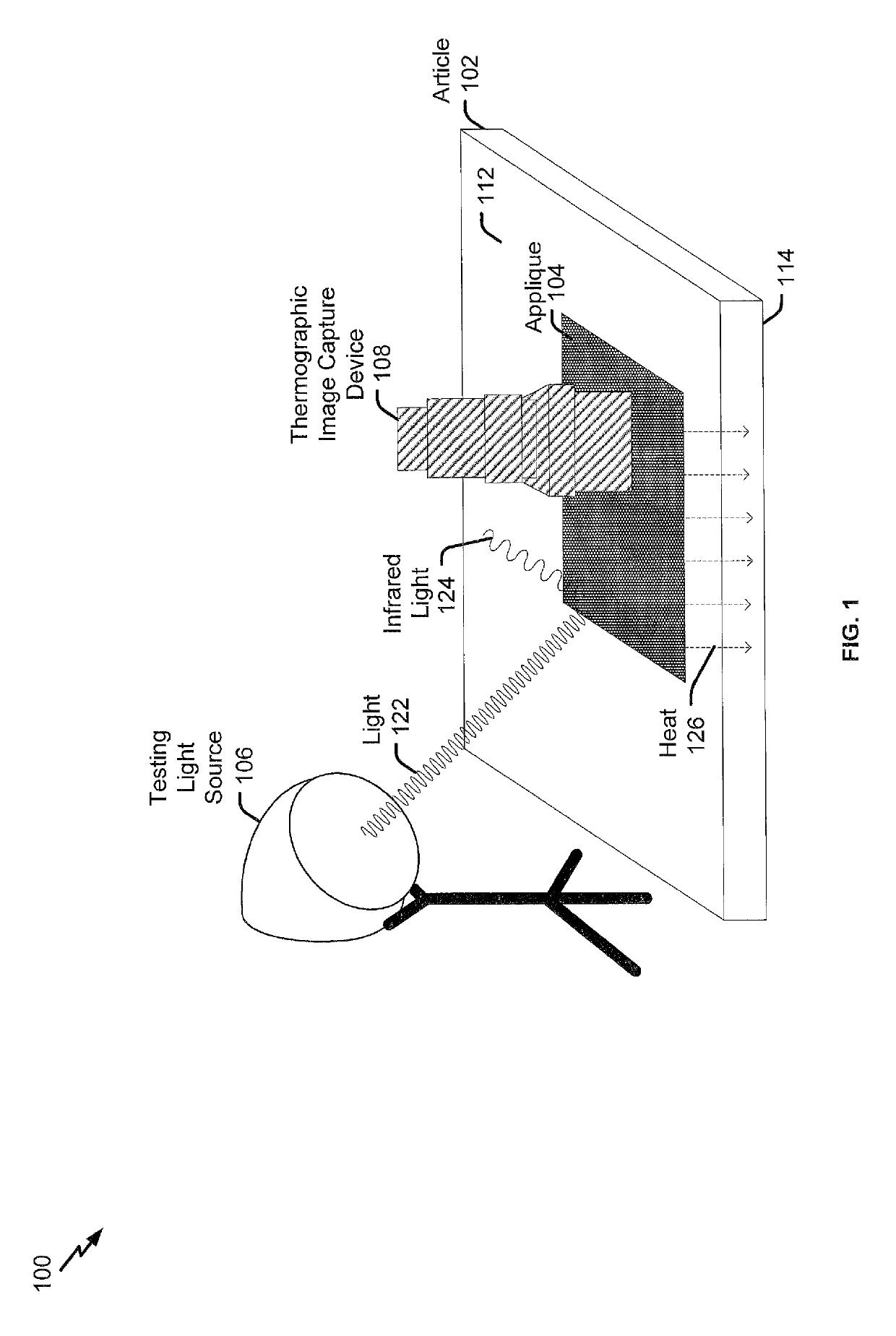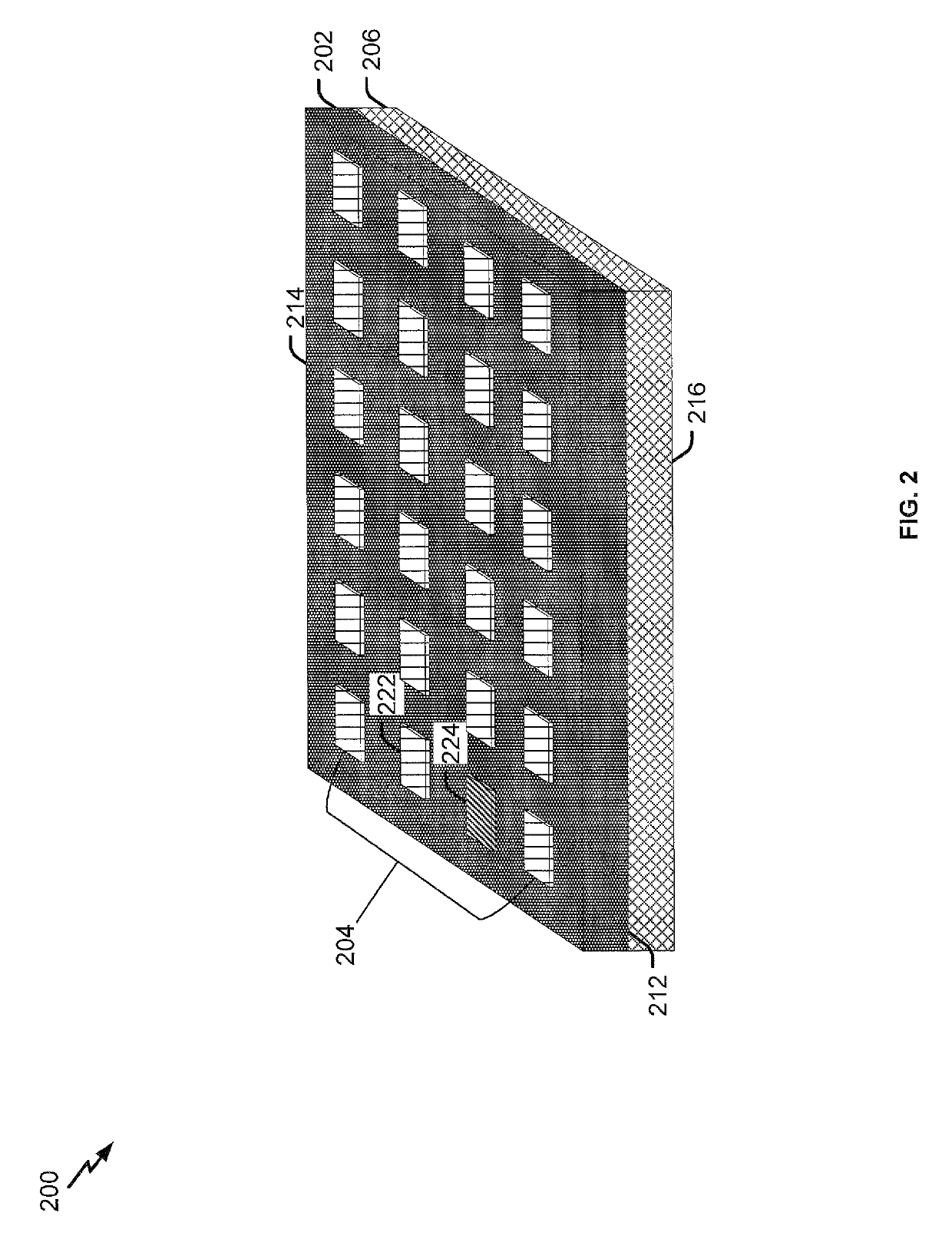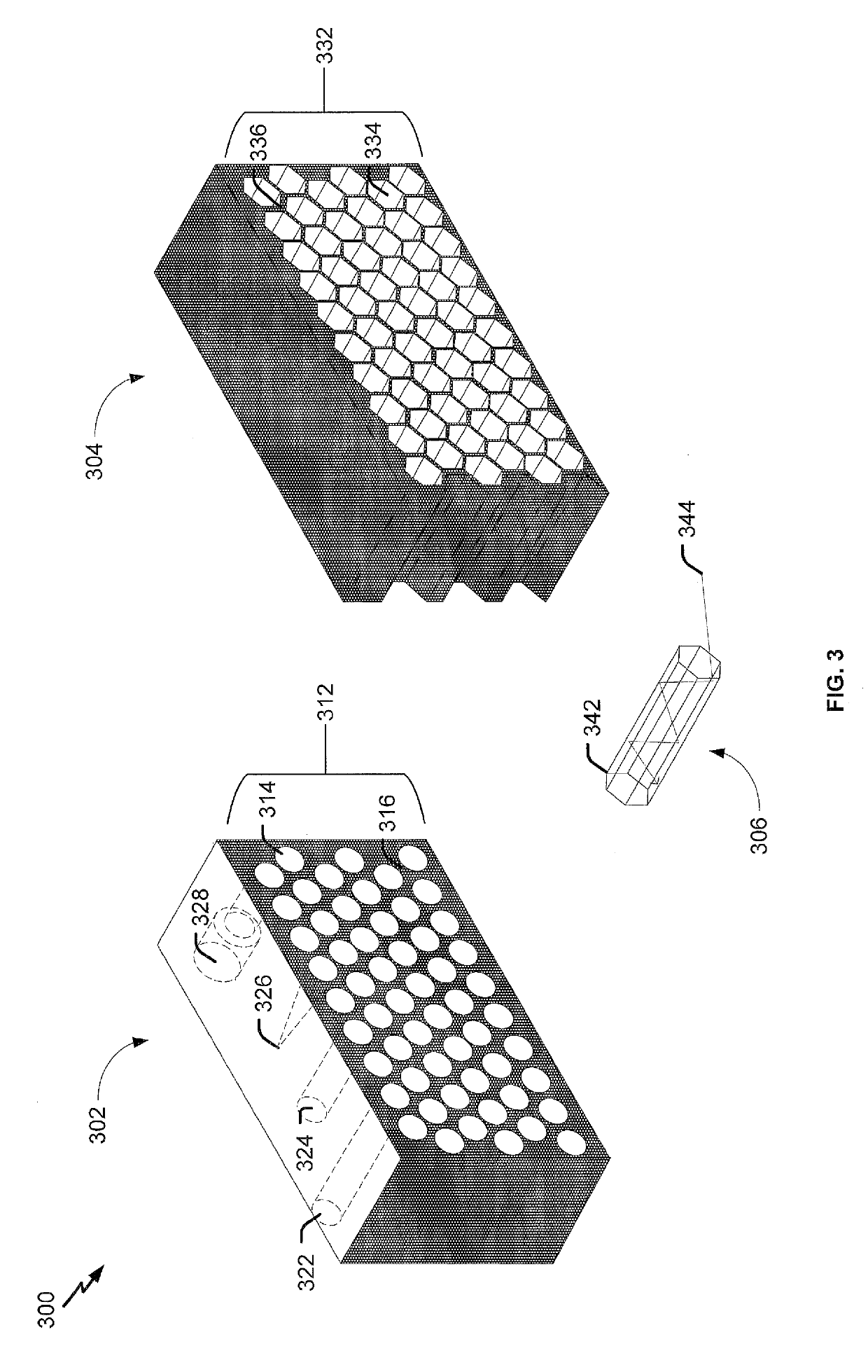Applique and method for thermographic inspection
a thermographic inspection and thermographic image technology, applied in the direction of material flaw investigation, optical radiation measurement, instruments, etc., can solve the problems of the inability to apply coatings uniformly, and the inability to accurately detect the temperature of the component, so as to reduce the preparation and cleaning time, the inspection time may be shortened, and the surface preparation and cleaning time is reduced
- Summary
- Abstract
- Description
- Claims
- Application Information
AI Technical Summary
Benefits of technology
Problems solved by technology
Method used
Image
Examples
Embodiment Construction
[0023]Implementations disclosed herein enable non-destructive inspection of articles, such as components of an aircraft. In particular, an applique may be affixed to an article and a thermographic inspection may be performed to examine the article for structural and sub-surface defects. In some implementations, the applique may be removable and reusable. Thermography involves capturing infrared light indicative of a heat distribution of an object. Thermographic inspection involves evaluating the heat distribution (e.g., temperature differences between areas of the object) to indicate structural or sub-surface defects in the article. To illustrate, a structural or sub-surface defect may impair heat transfer (e.g., conduction of thermal energy) between a surface and the structure of an article. As another example, a structural or sub-surface defect may impair conduction of thermal energy between a first surface and a second surface of an article.
[0024]When heat is applied to the surfa...
PUM
| Property | Measurement | Unit |
|---|---|---|
| angle | aaaaa | aaaaa |
| thermal | aaaaa | aaaaa |
| thermal energy | aaaaa | aaaaa |
Abstract
Description
Claims
Application Information
 Login to View More
Login to View More - R&D
- Intellectual Property
- Life Sciences
- Materials
- Tech Scout
- Unparalleled Data Quality
- Higher Quality Content
- 60% Fewer Hallucinations
Browse by: Latest US Patents, China's latest patents, Technical Efficacy Thesaurus, Application Domain, Technology Topic, Popular Technical Reports.
© 2025 PatSnap. All rights reserved.Legal|Privacy policy|Modern Slavery Act Transparency Statement|Sitemap|About US| Contact US: help@patsnap.com



